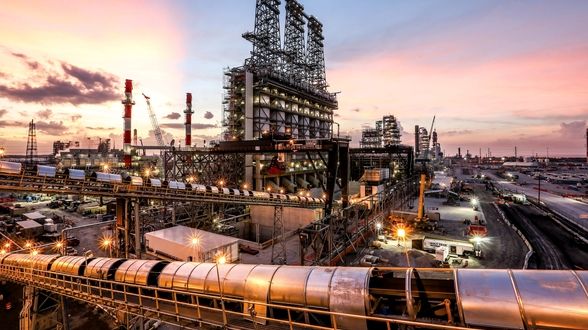Assessing the risks of higher energy prices
They believe — and I agree with them — that peering far into the past will help them to understand better the laws of physics that affect our lives right now.
But no matter how much economic history I study, I still have to grapple with the “hard right edge” of a chart. That’s the line on the graph where history ends. All of the lines and curves and numbers to the left already happened, and all of the blank open space to the right represents the future.
The second point is that crude oil prices are rising briskly at the present time. It appeared to me that the price of oil hit a peak in the fourth quarter of last year, and this peak seemed to be confirmed by the fact that resin prices started to roll over shortly thereafter.

Yet despite my expectations to the contrary, crude oil prices have been running hard to the upside during the past couple of months. I am now increasingly reading articles in the business press that a price of $100 per barrel is coming. My Resins Price Index, which is calculated on a monthly basis, has not yet started to move higher. And, like I mentioned, resin prices do not always follow every wrinkle in the crude oil market.
Now I can think of several reasons why the price of crude oil might reverse and start to come down just as fast as it went up. And I can also think of reasons why the trend in resin prices might not follow the recent surge in oil prices, if indeed the oil price does reverse in the near term.
But as I sit here today, on the hard right edge of the graph, I cannot ignore the risk that the recent trend of rising oil prices will be sustained for a while longer. I cannot rule out the possibility that the long-term uptrend that began shortly after the lockdown in 2020 has farther to go before it hits a long-term peak. Therefore, I cannot ignore the risk that resin prices will soon start to rise as well.
And as we know, a trend of rising energy prices not only pushes materials prices higher but also it pushes up the cost of running our factories. Higher prices for the necessities of gasoline and heating oil function as tax on consumers, which lowers their purchasing power for other goods and also their confidence levels.
Higher energy prices can also exacerbate and even be connected to increasing risks from the concurrent trends of rising interest rates, rising inflation and a decline in the stock market. Over the past two months, the interest rate on 10-year Treasury notes has jumped from just below 1.4 percent to just over 1.9 percent, and the trend looks poised to go even higher.
My purpose in bringing these latest trends into greater focus is not to alarm you, but rather to encourage you to stay alert and stay prepared. The U.S. and global economies are still trying to navigate their paths through the crisis caused by the pandemic. I read stuff about “COVID fatigue,” but I also see encouraging signs that we are making great progress in our efforts get beyond this crisis. But whether you are tired or optimistic or completely unaffected, you do not want to fall victim to irrational biases or situational blind spots.
As of this moment, I will defer the opportunity to present a forecast on the price for either crude oil or resin. I will confess that I always feel a certain pressure to make a call because, “What good is an economist or market analyst without a strong, well-supported opinion?”
But if the past two years have taught me anything, it is how to recognize better — and accept — uncertainty. There are times when I just do not know what to forecast when two graphs that have a strong historical record of reliably moving in the same direction start to diverge.
The chart above is just one example of my hard right edge dilemma at the present time. I could show other remarkably interesting examples of this if time and space allowed.
To summarize, I will state again that these diverging lines should not be cause for alarm, at least not yet. The U.S. economy is on solid footing, and it is getting stronger every day. We are hitting some bumps, and these bumps will affect certain companies and industries harder than others. They will also create some opportunities and teachable moments.


